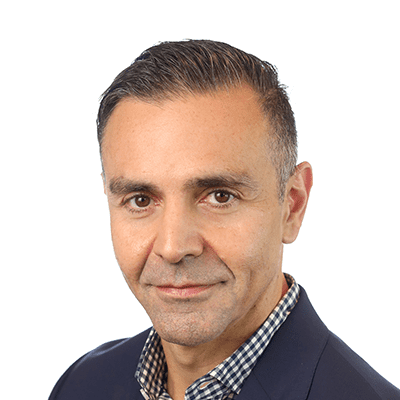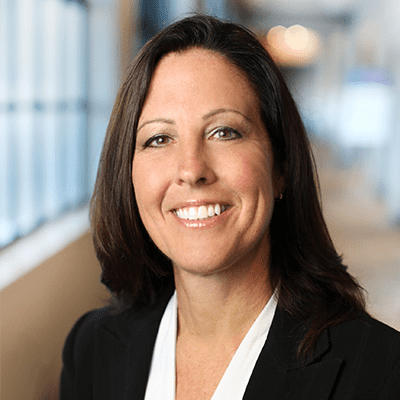- Solutions
- Solutions
- Home Health
- Hospice
- Life Plan Community
- Palliative Care
- Private Duty
- Senior Living
- Skilled Nursing
- Skilled Nursing
- Skilled Nursing Software
- Advanced Insights
- Customer relationship management
- Data and analytics
- Financial & operations management
- Marketing
- Nutrition management
- Referral management
- Regulatory compliance
- Retail management
- Resident engagement
- Revenue cycle management
- Skilled nursing interoperability
- Partners
- Blogs
- Resources
- About
- User Conference

How to boost job satisfaction and staff retention in nursing homes and LTC facilities
The technology driving EHR systems has come a long way in recent years. What began as a way to improve and secure record keeping and information sharing has expanded to include many other benefits for healthcare organizations of all types. For instance, today’s most sophisticated EHR platforms can also help boost job satisfaction and staff retention in nursing homes, senior living facilities and life-plan communities.
And this can be a significant advantage to managers of these facilities, especially in the face of today’s urgent workforce challenges. But not all EHR systems are created equally! To get the best value out of an investment in a modern EHR platform, it’s important to make sure it’s up to the task of maximizing staff retention and satisfaction in the following ways.
6 ways EHR platforms can help boost job satisfaction and staff retention in nursing homes and other LTC facilities
#1: Making technology easier to use
Perhaps the most important element in achieving higher levels of job satisfaction and staff retention in nursing homes and other long-term care (LTC) facilities is making sure the EHR platform is as intuitive and user friendly as possible. Not long ago, these systems were notoriously difficult to use — or at least, perceived as such by staff. As a result, many workers resisted engaging with them. And that could negatively affect productivity, patient outcomes and job satisfaction.
Today, though, the best EHR systems are designed to mimic the smart devices people use every day. Carrying around easy-to-use, touchscreen-enabled tablets makes it easy for nurses, aides and other clinical workers to utilize this powerful technology. And that encourages acceptance, as well as greater satisfaction with their day-to-day work.
#2: Improving staff productivity and work/life balance
Not only are the devices associated with today’s leading EHR platforms easy to use, they’re also designed to simplify key processes. Charting and documentation become faster and more convenient, as does communication between caregivers and the families of residents. And workers always have at-a-glance access to a resident’s full history and particular needs while they’re at the bedside.
Higher levels of productivity, more accurate clinical data, and potentially less overtime are the results — all of which can help employers maximize their budget while improving work/life balance for staff. In short, workers spend less time on redundant tasks, and more time doing the part of the job they value most: attending to the people under their care.
#3. Helping develop a more positive culture
Offering tools that actually help them get their (sometimes difficult) work done more quickly and efficiently can also help make clinical staff feel more supported and appreciated. And that can nurture a more positive overall workplace culture — one that employees value, and are reluctant to leave.
Employers can take this advantage one step further by ensuring that the training process for these tools is a legitimately helpful and interactive process. And setting up an ongoing training program means giving staff even more opportunities to refresh their knowledge and get caught up with new features and iterations. The likely result is an additional boost to productivity and engagement.
#4. Building a stronger sense of community
When it comes to training, it’s helpful to create a plan for both one-on-one and group-based sessions. Group training sessions in particular can help ensure that staff members get the best use of the tools at their disposal. They can also help build a stronger sense of community by letting workers learn together and develop skills in a collaborative environment.
Productive group training is also useful for onboarding new team members. It helps integrate them more quickly and efficiently, and in a way that makes them feel welcome and involved — especially when combined with traditional best practices like mentor programs. And better engaging new workers makes them more likely to become long-term employees.
#5. Offering support when and where it’s needed most
Not only do today’s leading EHR systems enable staff to work in a more efficient and satisfying way, but they also show managers how each member of the team is performing on a task-by-task basis. And that gives leaders the info they need to identify employees who may be having challenges in certain areas, and provide the necessary assistance.
Since these difficulties can quickly lead to the kind of frustrations that cause turnover, the opportunity to catch and correct them at an early stage is a valuable one. Doing so can further boost productivity by helping workers overcome challenges that may be stifling their immediate engagement and satisfaction. Even better, it can remove a potentially serious obstacle to that employee’s long-term happiness.
#6. Empowering staff to work at the top of their abilities
By helping caregivers more easily perform their core duties, today’s leading EHR platforms can help engage them in more important processes, too. For instance, features that guide them through CMS reporting requirements or continuity of care documentation can help save time and ensure accuracy. (They also help offset the “black hole” of care transitions, where key patient data is too easily lost.)
Features like this also help staff work more confidently and with less anxiety. Instead of punching a clock and then doing the bare minimum to get through the day, they’re empowered to actually make sense of the clinical data they work with. They also have more time for the kind of critical thinking that could improve outcomes. The result is better care in general, and workers who are more engaged, informed, and empowered to do their very best.
Improve staff satisfaction and retention in your facility with MatrixCare
At MatrixCare, we’re proud to offer not just a leading EHR tool for nursing homes and LTC facilities, but also the accompanying tools to enable all of the above benefits — and then some. With continuous updates and the training to go with it, we work to ensure that our clients have every tool at their disposal to maximize efficiency and their return on investment, while giving staff the best possible employment experience.
Request a demo today to learn more about how our industry-leading EHR platform can help boost staff satisfaction and retention in your facility.
See what MatrixCare can do for you
Cassie Diner
Cassie Diner joined the clinical team at MatrixCare in May of 2013 after graduating with a BSN, RN from College of Saint Benedict. That same year she became the RN charge nurse at a long-term care facility. In 2015 she became a senior trainer and eventually became a Senior Manager of Client Education at MatrixCare in 2018. Cassie currently works as a Clinical Product Manager and continues to work at a long-term care facility as the RN charge nurse. Being part of the MatrixCare team allows her to utilize her technology, clinical, and leadership skills.
Related Posts


See MatrixCare in action
Start by having a call with one of our experts to see our platform in action.
MatrixCare offers industry-leading software solutions. Thousands of facility-based and home-based care organizations trust us to help them improve efficiency and provide exceptional care.
© 2025 MatrixCare is a registered trademark of MatrixCare. All rights reserved.






